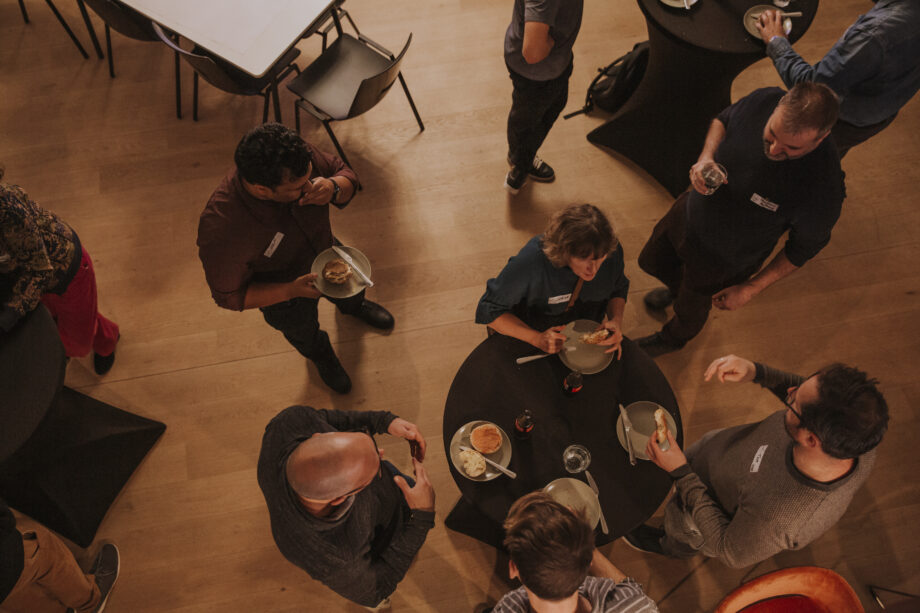November 6th announced our one but last Agile Kitchen of 2023. And we had something cooking for all attendees. Because besides old-fashioned sandwiches, we put Heino Schaght on the menu. We’ll dive in later on who Heino is, but he introduced us to the Lightning Decision Jam, a problem solving method, created by AJ&Smart. So after a satisfactory introduction round with food and drinks, we split up the group in smaller parts of 5 or 6 persons for a brainstorm session. How that went, and what we took away from it, was food for thought for this new Agile Kitchen Blog. Bon appetit!
For starters: Who is Heino Schaght?
Our Agile guest for tonight was Heino Schaght, Innovation Manager at Mediahuis. In this function, Heino is responsible for the innovation processes at Mediahuis, guiding stakeholders on possible opportunities or trends. Mediahuis is a leading international multimedia company with a diversified portfolio and news brands such as Het Nieuwsblad and De Standaard in Flanders.
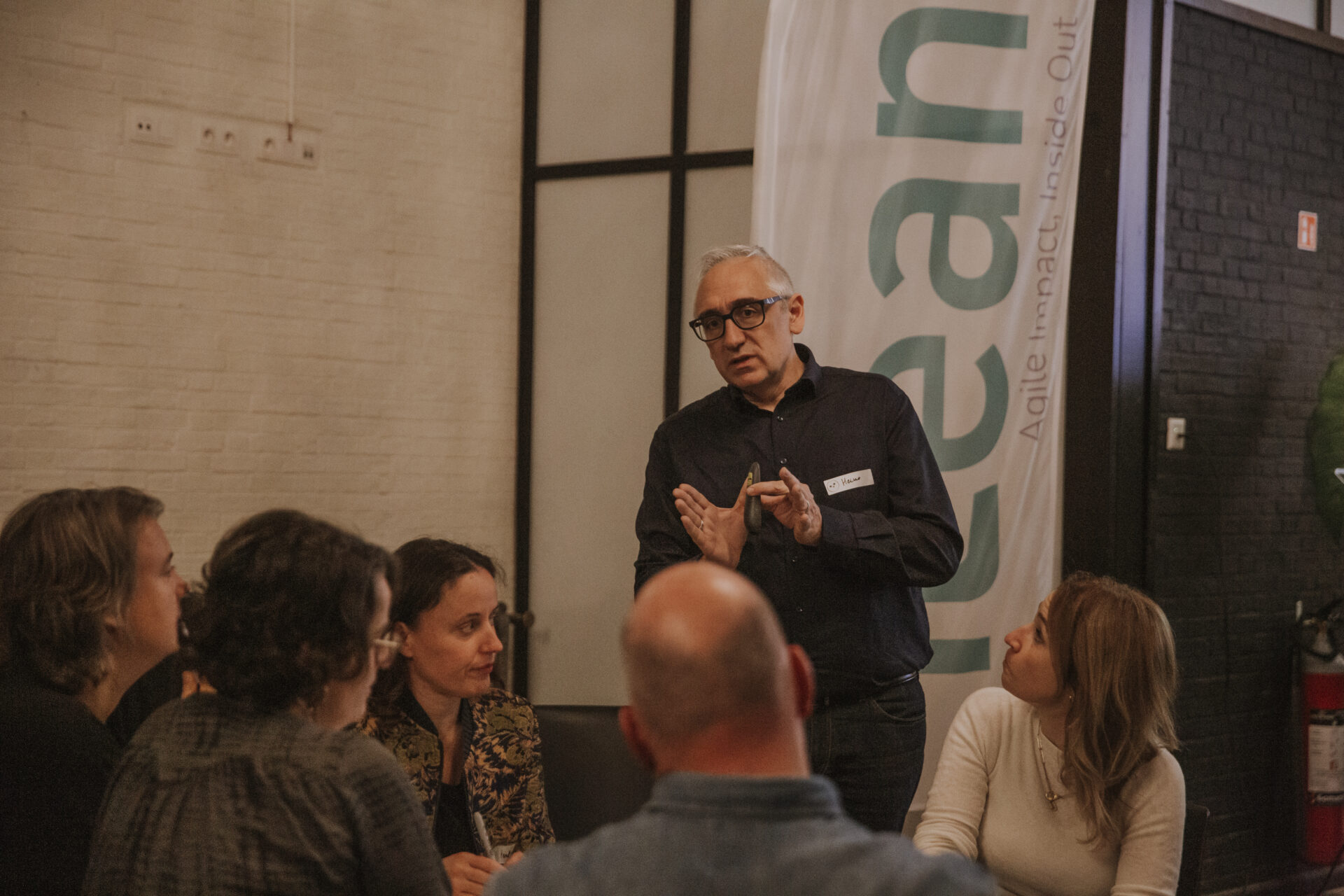
Pre-course: What is the Lightning Decision Jam method
The Lightning Decision Jam method is a group exercise developed by AJ&Smart, a global innovation and Product Design Agency based in Berlin. They created this simple and effective group exercise after years of experience working with large companies.
“Replace all open discussion or brainstorming with a structured process that leads to more ideas, clearer decisions, and better outcomes.”
LDJ facilitates this idea and helps to solve big problems quickly by means of a clear and structured process in a group session of about 45 minutes. So that’s what it approximately took us tonight as well.

Round 1: Problem positioning and starting point
That’s exactly what Heino started with as well and now we’d seen the theory, it was time to get cooking. The recipe was simple. We started the evening by dividing all attendees into smaller groups of around 5 or 6 people, armed with markers, post-its (what else?), and two large, empty papers. After deciding on a starting thesis, everyone was asked to make notes on everything that works well and the challenges in the workplace. After distributing the post-its with our initial thoughts to the previously blank paper, we moved on to the second course.
Round 2: Challenges
This round consisted of coming up with challenges concerning our starting point. To agree on what challenge we’d prioritize, we used the Working Together Alone principle; everyone takes a moment to personally think of a few challenges. These ideas are discussed in group afterwards. And a simple dot-voting decides which challenge will be elaborated on further.
This idea makes sure that everyone speaks up, participates fully, and has the courage to express their opinions. Ideal to receive all of the input and feedback from the entire group.

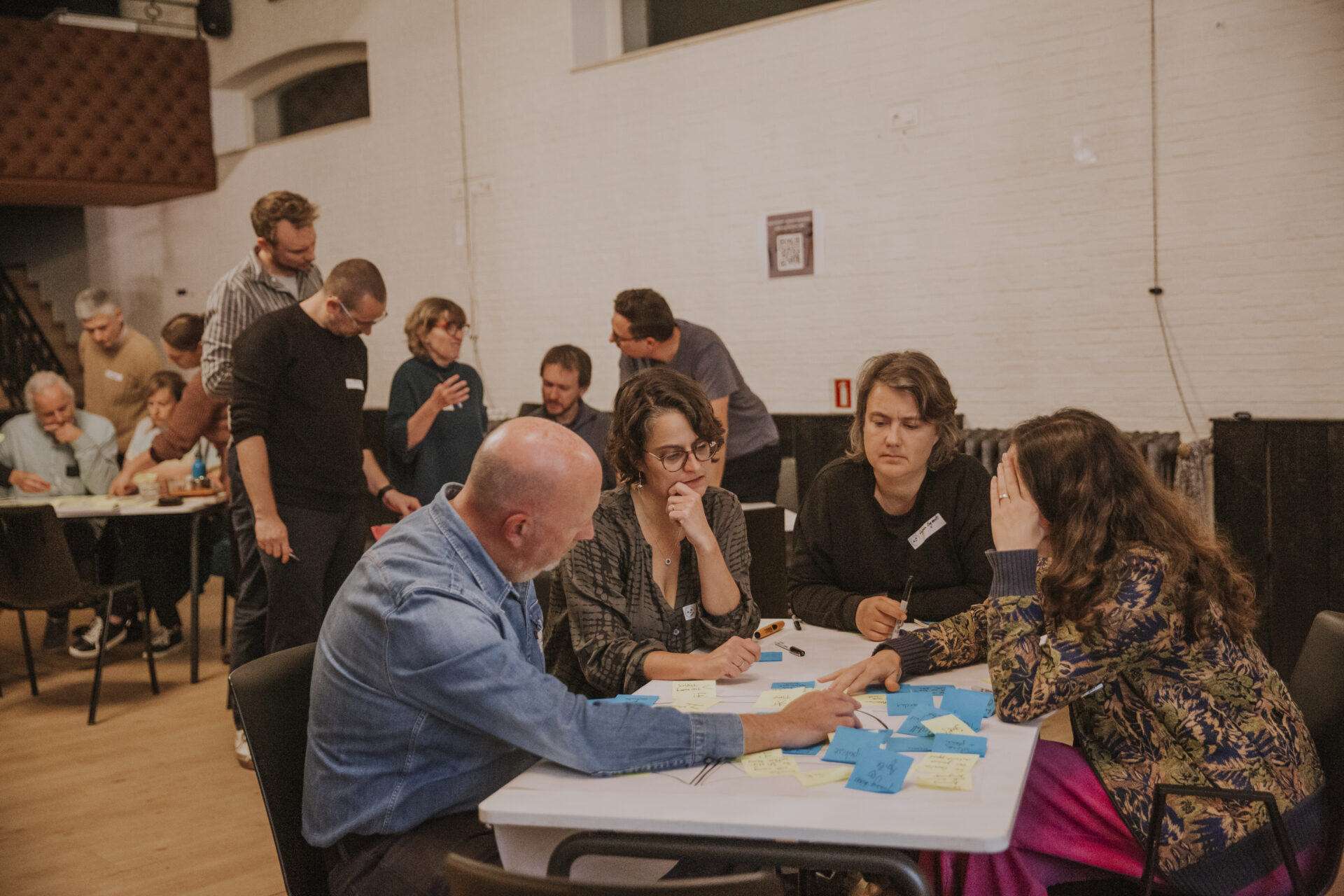
Round 3: How-might-we’s
By our third course of the night, the funnel or process regarding the problem we wanted to solve was already starting to show. By using this method (The Lightning Decision Jam) you decide together on which problem you’re going to tackle, but you call out other issues as well that could be subject to other Decision Jams. Anyhow, after choosing one particular challenge, we paraphrased it to: How might we … By putting your problem this way you clearly describe the issue in a way that you can start looking for the right solutions.
Round 4: Brainstorming solutions
The last but final round was about brainstorming solutions. According to the same principles, we individually came up with a bunch of solutions for the problem and voted on which ones we wanted to implement. That’s where the second piece of paper came in. Our freshly brainstormed ideas were put on a vertical ‘impact’ axis, ranging from low to high. Next, we drew a horizontal axis as well, representing the effort our ideas will cost. After drawing this matrix, we moved our post-its on the ‘effort’ axis, without changing their place on the impact line. This way you have a visual overview of your solutions which helps you decide which ones you should focus on first.
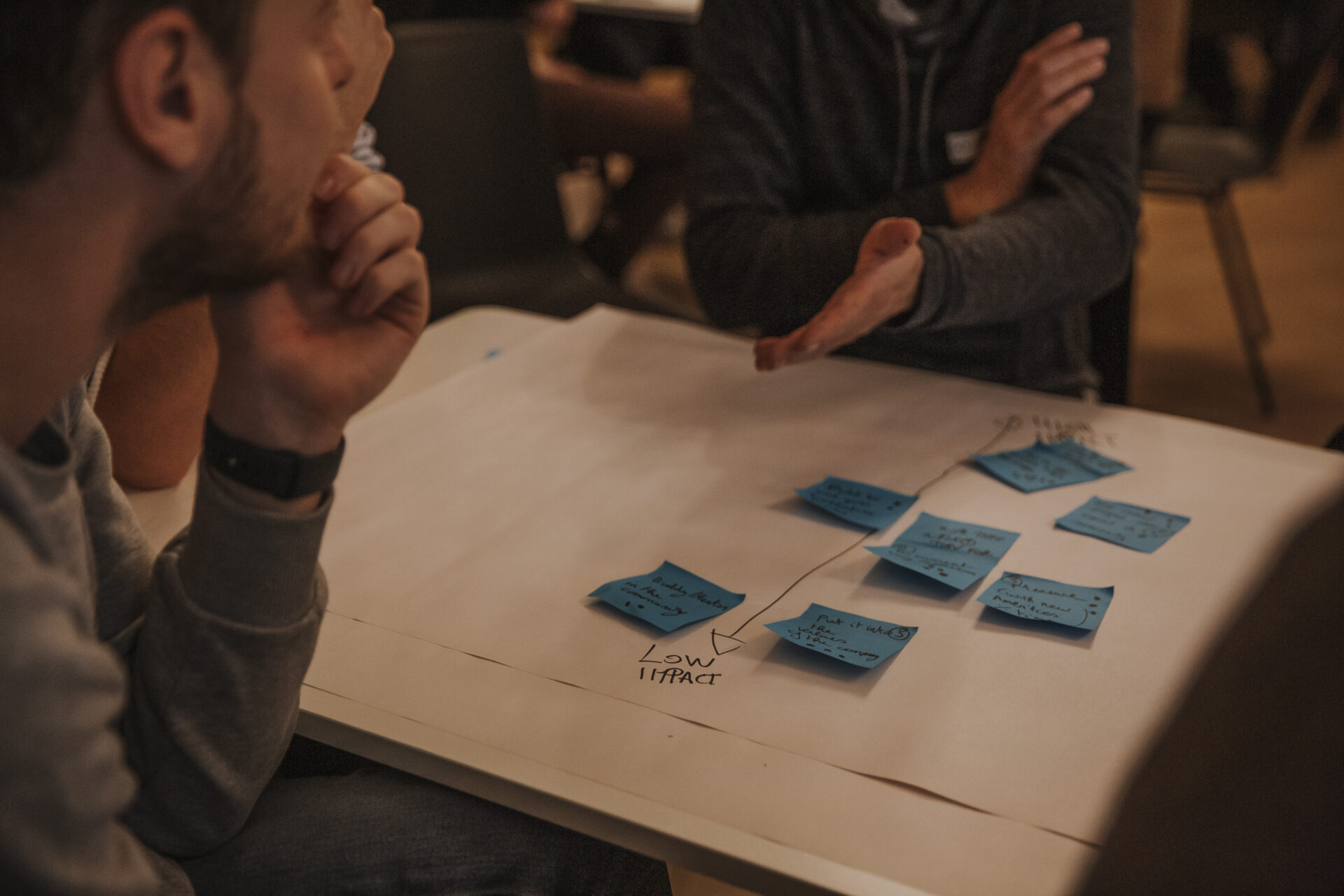
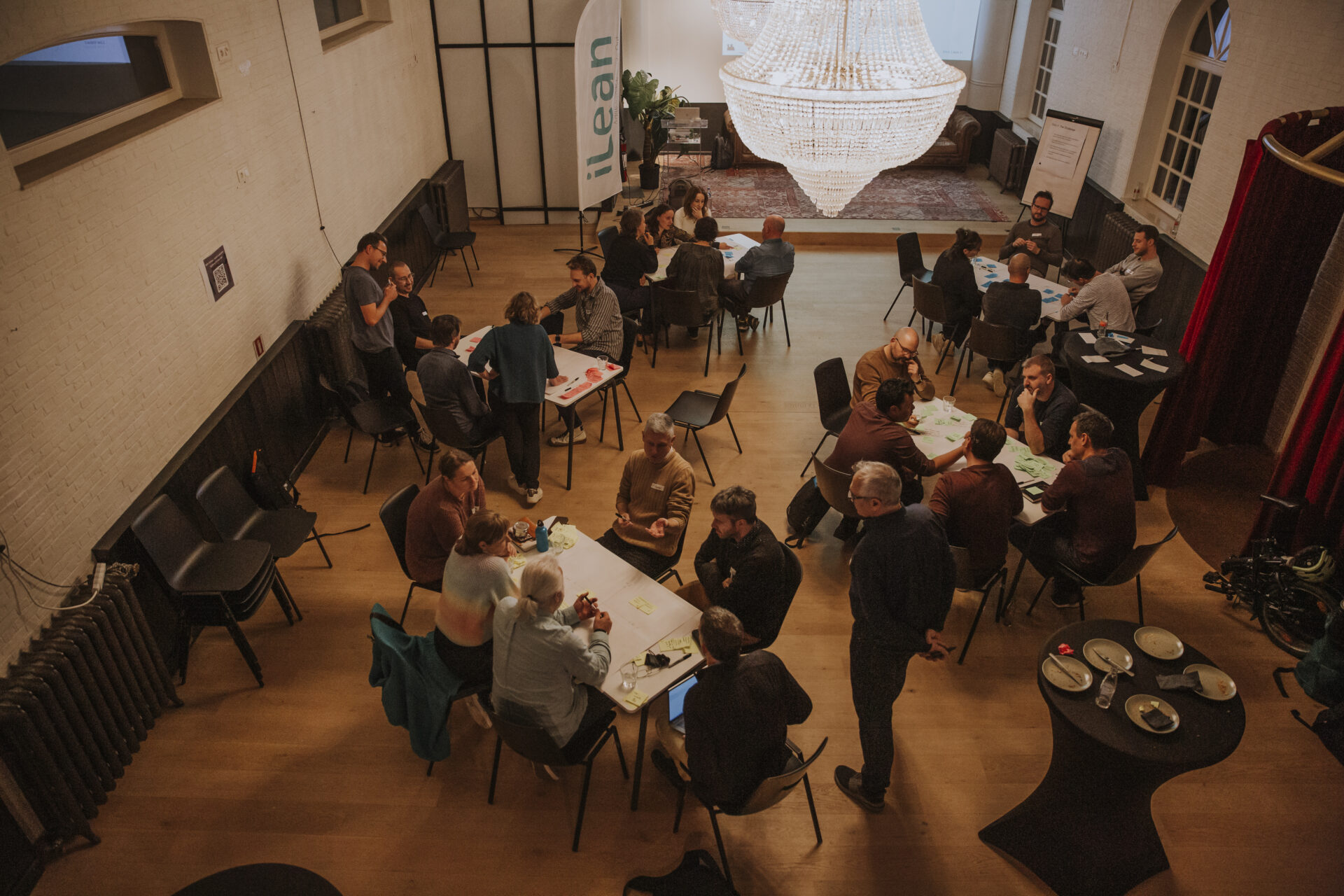
Dessert: Results and next steps
Our final step was to decompose the eventual solutions and convert them into tangible actions and next steps.
So to summarize, we came up with multiple problems or challenges, dove into one specific and acute issue for which we brainstormed a ton of solutions to eventually divide into several action points.
And all of that, in only 45 minutes.
Doggy bag: what do we take home?
This method, or approach, guarantees that every member of the team is inspired and encouraged to contribute actively. This is due to the fact that problems are visually mapped and then dealt with in a very tangible manner. Once you’ve finished the session, you get a tangible outcome together with a concrete follow-up plan. You should absolutely give it a try!
Interested in our next agile Kitchen?
During this session on December 7th, you’ll dive into the world of Team Topologies, a practical library of patterns for organizational design and team interactions. It is created by Matthew Skelton and Manuel Pais, authors of the book “Team Topologies: Organizing Business and Technology Teams for fast flow”.

